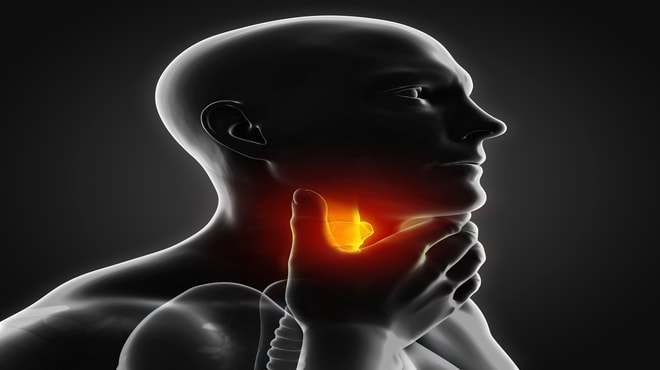Thyroid cancer is the cancer in the thyroid gland, an endocrine organ which produces hormones that control the speed of metabolism. Read more about thyroid cancer here.
How is thyroid cancer staged?
Staging of thyroid cancer helps the doctors figure out the on how much the cancer has spread in the body and determine its best treatment. Staging also helps calculate survival statistics too. The lower the number of the stage, the less is the cancer has spread, with early stages being 1 and the most advanced stage being 4. The staging system and the other factors taken into consideration to determine the stage of thyroid cancer are as follows:
TNM method:
Cancer types that form tumours are staged using TNM system and the same method is used for thyroid cancer too. The size of the primary tumour (T), the presence of cancerous lymph nodes (N) and how far the thyroid cancer has spread to a different part of the body (M) can be described using the TNM system.
Type of thyroid cancer:
Differentiated thyroid cancer refers to those types in which the cancerous cells look and act like normal thyroid cells, and this accounts for more than 90% of all thyroid cancers. Papillary and follicular thyroid cancers are differentiated with the former accounting to 80% of the total cases and the latter, 10%. Read more about the types of thyroid cancer here.
All anaplastic thyroid cancers are staged to be stage IV due to the poor diagnosis of this cancer type and the exact stages will be discussed in the treatment of stage IV of thyroid cancers.
Age:
Age is also taken as a factor for staging differentiated thyroid cancers while it is not a factor for medullary thyroid cancer. Differentiated thyroid cancers are staged the same but the age factor is also taken into consideration to determine the stage as younger people are less likely to die due to these cancers than older patients.
Stage II thyroid cancer:
The characteristics of stage II thyroid cancer on the basis of age and type of thyroid cancer is as follows:
Stage I papillary and follicular thyroid cancer:
For patients younger than 55 years, the size of the tumour can be anything, the tumour might or might not have spread to nearby lymph nodes, but has spread to other organs of the body and the staging is (any T, any N, M1).
For patients above 55 years, the tumour size is about 2 cm to 4 cm and has not spread to nearby lymph nodes but not to distant organs and the staging is (TX, N1, M0) where X can be 1 or 2 or the tumour size is more than 4 cm but has not spread to nearby lymph nodes and distant organs and the staging is (T3, N0, M0).
Stage I medullary thyroid cancer:
The tumour size is about 2 cm to 4 cm or larger than 4cm but is confined to the thyroid gland and has not spread to nearby lymph nodes or distant organs. The staging is (TX, N0, M0) where X is 2 or 3.
What is the treatment for stage I thyroid cancer?
Treatment of stage II papillary and follicular cancer:
Stage II thyroid cancer has good prognosis and outlook and reacts well to treatment, the treatment methods for stage II of differentiated thyroid cancers are:
- Near or total thyroidectomy with or without radioiodine therapy.
- Lobectomy and removal of lymph nodes if the cancer has spread followed by hormone therapy.
- Radioactive iodine may be given post surgery to remove the remaining affected cells.
Treatment of stage II medullary thyroid cancer:
- Total thyroidectomy followed by thyroid hormone therapy because the thyroid gland is removed. This can only keep the patient healthy but does not reduce the risk of cancer coming back. MTC cells do not take up radioactive iodine so radioiodine therapy cannot be used.




